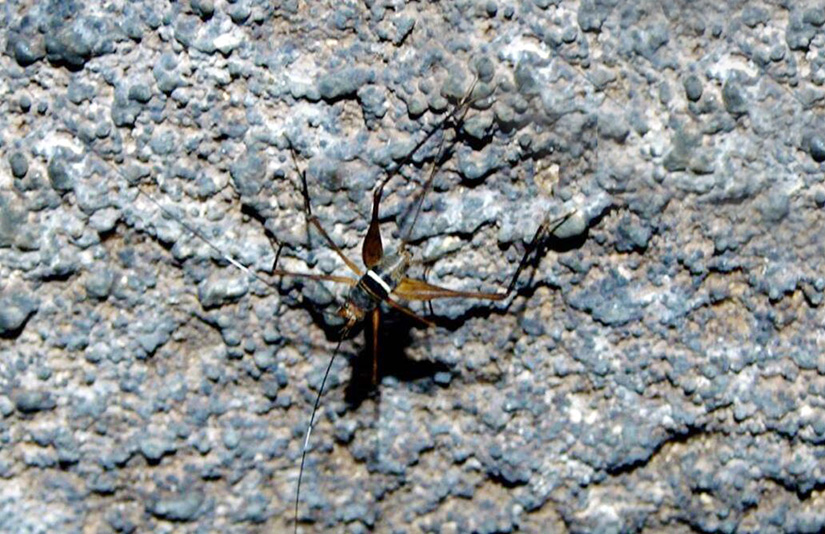Biodiversity & Environment
Jayanti: New Species of Cricket
- 29 May 2021
- 3 min read
Why in News
Recently, a new species of Cricket named 'Indimimus jayanti' was found in the Kurra caves of Chhattisgarh.
- The new species was named after Professor Jayant Biswas, one of the leading cave explorers in the country.
Key Points
- About the New Spider Cricket:
- The new species of cricket has been identified under the genus Arachnomimus Saussure, 1897.
- Jayanti has led to the new subgenus 'Indimimus'.
- Males of the new Jayanti subgenus cannot produce sound and their females don’t have ears.
- About the New Subgenus:
- The newly discovered subgenus, Indimimus, is different from the two subgenera, Arachnomimus and Euarachnomimus, because of the male genitalia structure.
- Insects have a lock-and-key model genitalia structure which is unique to each subgenus.
- Arachnomimus Saussure, 1897:
- Arachnomimus is the genus name given by Swiss Entomologist Henri Louis Frédéric de Saussure in 1878 to crickets that resembled spiders.
- Crickets of this group are commonly called spider crickets because of their smaller body size and long legs.
- Significance of the Discovery:
- It can help in designing hearing aids for humans.
- The new species may be communicating by beating their abdomen or any other body part on the cave walls.
- Vibrational communication is one of the softest but fastest modes of signal transmission.
- Vibrational communication can be regarded as an interaction between the physical properties of the environment and insect's anatomy and physiology and resulting behavior.
- Further studies on their skills of vibrational communication may help in designing hearing aids for humans which can capture quietest signals and amplify to an audible hearing range.
- With the discovery of Jayanti from India, the genus Arachnomimus is now known from 12 species. Distribution of these species is very wide, ranging from Brazil to Malaysia.
- In India, the diversity of spider crickets is still unexplored. Given India is home to four biodiversity hotspots, and all the hotspots have unexplored caves, there is significant scope for many more discoveries.
- It can help in designing hearing aids for humans.
- About Crickets:
- Cricket, any of approximately 2,400 species of leaping insects that are worldwide in distribution and known for the musical chirping of the male.
- They have mainly cylindrical bodies, round heads, and long antennae. Behind the head is a smooth, robust pronotum.
- Crickets are noticeable for their loud calls, especially at night. Male crickets produce this sound by rubbing their wings against each other to attract females.
- The females listen to these calls using ears located on their legs and approach the males for mating and reproduction.





